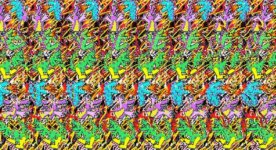I didn't even realize that there are now working models for Glasses free 3D. It seems that the different options are very limited in terms of resolution and possible audience size, but it's just a matter of time before 3D could once again become "the thing", not just at the theaters, but also at home. This time without the awkwardness of wearing the glasses.
Good article on the state of glasses free 3D
My only worry is that the technology people are also talking about AI 2D to 3D conversion software that will make any movie into a 3D movie. Imagine trying to watch a fast paced action movie with a bunch of quick cuts and hand held camera work in 3D. It's the kind of thing that kills the potential of a purposely designed and executed 3D movie before it has a chance to be properly explored. Why do I think that? It's because that is exactly what happened when all those 2D movies tried to ape the success of Avatar by converting to 3D simply to cash in with no thought at all for what 3D can mean to storytelling.
I for one look forward to the day when I can watch a good stereoscopic movie at home on a 100 inch monitor without have to wear 3D glasses.
Good article on the state of glasses free 3D
My only worry is that the technology people are also talking about AI 2D to 3D conversion software that will make any movie into a 3D movie. Imagine trying to watch a fast paced action movie with a bunch of quick cuts and hand held camera work in 3D. It's the kind of thing that kills the potential of a purposely designed and executed 3D movie before it has a chance to be properly explored. Why do I think that? It's because that is exactly what happened when all those 2D movies tried to ape the success of Avatar by converting to 3D simply to cash in with no thought at all for what 3D can mean to storytelling.
I for one look forward to the day when I can watch a good stereoscopic movie at home on a 100 inch monitor without have to wear 3D glasses.
Last edited:




